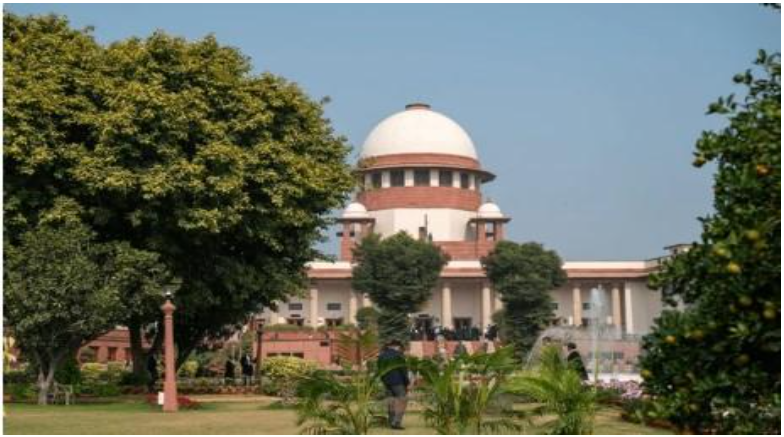Introduction:
After winning a court judgment or obtaining a decree in a civil suit, the next critical step for a creditor is to ensure the judgment is enforced. This is where an execution petition comes into play. An execution petition is a formal request filed in court to enforce a decree when the debtor (or judgment debtor) has failed to comply voluntarily. In this blog, we’ll explore the steps and requirements involved in filing an execution petition to help you navigate the process efficiently.
- Understanding Execution Petitions
An execution petition is governed by the Code of Civil Procedure, 1908 (CPC), which provides creditors (decree holders) with various means to enforce judgments. An execution petition applies to any decree – whether it mandates the payment of money, transfer of property, or enforcement of an injunction.
Types of Decrees That Can Be Enforced:
- Money Decree: Requires the judgment debtor to pay a specified amount.
- Possession Decree: Requires the transfer of property possession.
- Injunction Decree: Mandates the debtor to do or refrain from doing something.
- Preliminary Requirements Before Filing
Before filing an execution petition, certain prerequisites must be met to strengthen the case and avoid delays:
- Certification of Decree: Ensure that the decree or judgment has been certified by the court.
- Waiting Period: Under CPC Section 51, a 30-day waiting period is generally required, allowing the debtor an opportunity to fulfill the judgment voluntarily.
- Interest Calculation: For money decrees, ensure that any applicable interest on the awarded amount is calculated and documented.
- Eligibility of Jurisdiction: Confirm that the petition is being filed in the appropriate court with the power to enforce the decree, which may be the same court that issued the judgment or another court where the judgment debtor’s assets are located.

3. Key Steps to Filing an Execution Petition
Step 1: Drafting the Petition
The execution petition must be meticulously drafted to provide all relevant information regarding the decree, including:
- Details of the Decree Holder and Judgment Debtor: Names, addresses, and contact information of both parties.
- Date and Nature of the Decree: Include information about the original decree, the amount awarded, and interest accrued if applicable.
- Relief Sought: Specify the enforcement actions requested, such as attachment and sale of assets, garnishment, or imprisonment.
Step 2: Submission of the Petition
Once the petition is prepared, it must be submitted to the appropriate court. The decree holder needs to pay the prescribed court fees, which may vary based on the type of enforcement requested and the state in which it is filed.
Documentation Required:
- Certified copy of the decree
- Calculation of interest (for money decrees)
- Evidence of any previous enforcement attempts, if applicable
Step 3: Issuance of Notice to the Judgment Debtor
Upon accepting the petition, the court issues a notice to the judgment debtor, requiring their appearance to show cause why the decree should not be executed against them. This notice serves as a formal reminder and gives the judgment debtor one final chance to comply voluntarily.
Step 4: Hearing and Arguments
If the judgment debtor fails to respond or settle the debt, the court schedules a hearing where both parties can present their arguments. The decree holder may demonstrate:
- The debtor’s non-compliance
- Any assets available for execution (e.g., property, bank accounts)
- Attempts at voluntary recovery, if any
The judgment debtor, in turn, can attempt to defend themselves, requesting installment payments or additional time, or claiming that they have already complied.
Step 5: Court’s Orders for Execution
Based on the hearing, the court may grant various execution methods, depending on the nature of the decree and the debtor’s ability to pay:
- Attachment of Property: For money decrees, the court may order the attachment and sale of the debtor’s movable or immovable property.
- Wage Garnishment: If the debtor is employed, the court can order a portion of their salary to be withheld for debt repayment.
- Bank Account Freezing: The debtor’s bank accounts may be frozen to prevent them from accessing funds.
- Arrest and Detention: In extreme cases where the debtor repeatedly evades compliance, the court may order arrest and detention to compel payment.
Legal Notice Lawyer Bangalore

4. Requirements for Specific Types of Execution
a. Money Decrees
When enforcing a money decree, the decree holder should provide:
- Accurate calculations of the debt amount, including principal and interest.
- Evidence of the debtor’s assets to facilitate the attachment and sale process, if needed.
b. Property Decrees
In cases where a decree requires possession of property:
- Documentation proving ownership or entitlement to the property is essential.
- Details of the property’s location and any occupants, if known.
c. Injunction Decrees
If enforcing an injunction, the decree holder must:
- Specify the prohibited actions and present evidence of any ongoing violations.
- Request specific remedies if the debtor fails to comply with the injunction.
5. Defenses available to the Judgment Debtor
The judgment debtor can raise certain defenses to delay or contest the execution, including:
Inadequacy of Assets: Demonstrating a lack of sufficient assets for execution.
Claiming Compliance: Arguing that they have already satisfied the decree.
Financial Hardship: Requesting a payment installment plan due to financial difficulties.
6. Costs and Timelines Involved
Execution petitions can be costly and time-intensive, depending on the complexity of the case and the debtor’s willingness to comply. Court fees, attorney fees, and other incidental costs must be considered. Additionally, unforeseen delays, such as asset tracing or third-party claims on the debtor’s property, may extend the process.
7. Concluding the Execution Process
Once the court’s orders have been implemented, and the decree holder has received their due amount or recovered possession, the execution process concludes. The court issues a satisfaction of decree certificate to formally close the matter, ensuring that the debt is considered settled.

Conclusion:
Filing an execution petition can be a complex and demanding process, but with a clear understanding of the steps and requirements, decree holders can navigate it successfully. By working with legal professionals and gathering the necessary documentation, creditors can enforce judgments effectively, protecting their financial interests while respecting procedural requirements. Whether dealing with money recovery, property possession, or injunction enforcement, the execution petition is a powerful tool for creditors seeking justice.
Disclaimer:
The information provided in this article is for general informational purposes only and does not constitute legal advice. While efforts have been made to ensure the accuracy of the content, Bisani Legal and its representatives are not responsible for any errors or omissions, or for any outcomes resulting from reliance on this information. Readers are advised to consult a qualified legal professional for specific legal guidance related to their individual property matters. The use of this article does not establish an attorney-client relationship between the reader and Bisani Legal.
Published by: Mr. Saket bisani
Date: 05/11/2024


